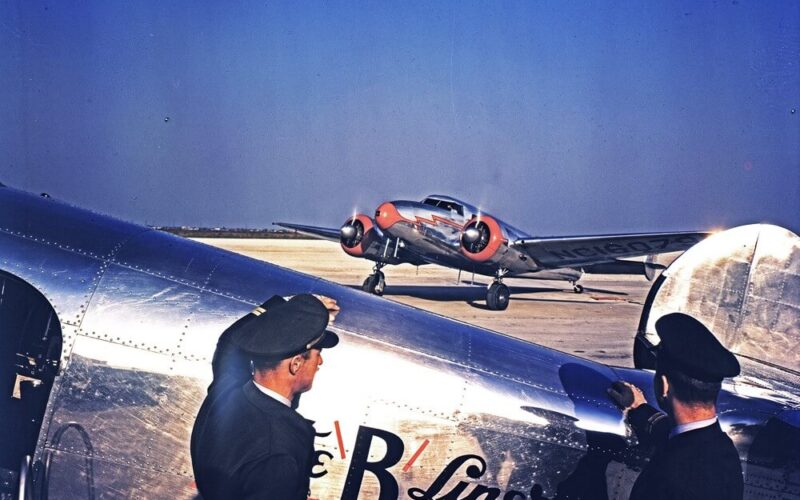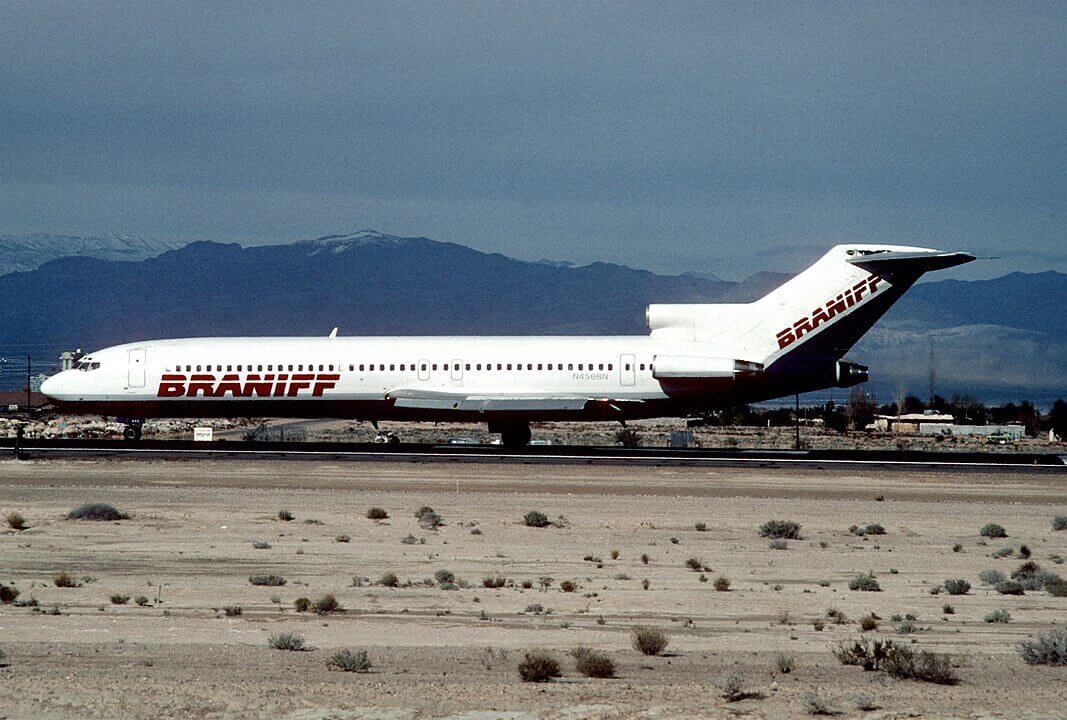In 1970, Braniff International Airways accepted delivery of the 100th Boeing 747, the first of 12 in its fleet. The aircraft, which was known as ‘747 Braniff Place’ and ‘The Most Exclusive Address In The Sky’ became a flagship in Braniff Airways’ fleet serving Dallas, Honolulu and later across the Atlantic to London.
At its peak, Braniff Airways was one of the fastest growing and most profitable airlines in the United States flying primary routes across the US, Mexico and South America.
But what happened to Branniff Airways?
The airline was founded on November 3, 1930 by brothers Paul Revere Braniff and Thomas Elmer Braniff. Braniff Airways Inc started flying routes between Oklahoma City, Kansas City, Chicago and St Louis using two Lockheed Vega aircraft.
Previously, the brothers had founded several aviation startups in the Oklahoma area gaining experience in the industry. A changing point for the brothers’ success came in the early 1930s when Braniff Airways won contracts for air mail routes and acquired Long and Harman Air Lines allowing rapid expansion.
The Concorde service began on January 12, 1979 between Dallas-Fort Worth and Washington, D.C. with the flights operated by Braniff crew and the aircraft fitted with Braniff registrations.
Following World War II, the airline was awarded rights to expand into the Caribbean, Mexico and South America with a fleet now consisting of Douglas DC-4s, DC-6s and DC-3s and, in 1951, following months of negotiations, Braniff acquired Mid-Continent Airlines.
The merger brought the fleet size to 75 aircraft and more than 4,000 employees. By 1955 the airline was the tenth largest in the US by passenger miles.
Braniff Airways Boeing 727 in 1984. Image: Aero Icarus, CC BY-SA 2.0
Death of the Braniff Brothers
On January 10, 1954, Thomas Braniff died when a Grumman flying boat he was flying on crashed as a result of ice contaminating the wings. A short time later in June of the same year, Paul Braniff died from complications of cancer and pneumonia.
By this time Charles Edmund Beard had become the airline president and was instrumental in moving the airline into the jet age. The first jets to arrive in the fleet were the Boeing 707 in December 1959 followed soon after by the arrival of the Boeing 720s.
Beard had also placed deposits on two Boeing 2707 Supersonic Transports at a cost of $100,000 per aircraft. The program, which was financed by the US government, was cancelled in the early 1970s.
Braniff rebranding was a huge success and prompted many other airlines to follow suit.
‘The End of the Plain Plane’
When Beard retired in 1964, he selected Harding Lawrence to assume the role of Braniff CEO. Lawrence had experience with Continental Airlines and, at age 44, was one of the youngest airline CEOs in the country.
Lawrence soon demanded an overhaul of advertising for Braniff and placed the Texas-based airline into the world spotlight with the help of New York advertising mogul Jack Tinker and Partners.
The existing Braniff livery was dropped and each aircraft was painted in a single color from a palette of carefully chosen vibrant tones. Along with the new livery, a couture ’space age’ uniform was rolled out and the aircraft interiors were matched with bright and colorful fabrics.
The overhaul of the airline was chic and exciting prompting many other airlines to follow suit. For Braniff, the rebranding was a huge success and the company realized record growth and profits over the following 14 years.
The Concorde service in the United States
In 1978 Lawrence negotiated a prestigious agreement with British Airways and Air France to operate Concorde on select American routes, the first time the supersonic aircraft was deployed domestically.
The Concorde service began on January 12, 1979 between Dallas-Fort Worth and Washington, D.C. with the flights operated by Braniff crew and the aircraft fitted with Braniff registrations.
Once at Washington, the aircraft were then handed back to BA and Air France for their respective flights back to London and Paris.
At Braniff, the Concorde proved unsuccessful with passengers opting to travel subsonic despite the 20-minutes extra flight time. However, owing to the contract with BA and Air France, any losses incurred were reimbursed, so the cost to Braniff was minimal. The Supersonic agreement remained until 1980.
Troubled 1980s
Up until the 1980s, Braniff Airways had experienced incredible growth and expansion. But by 1980, the cost of fuel had increased significantly and, for the first time in airline history, fuel costs were greater than labor costs, the price of fuel having doubled between 1978 and 1979.
As load factors decreased coupled with record fuel costs and the arrival of the worst recession since the Great Depression of 1929, interest rates spiraled and credit became untenable with interest rates peaking at around 20% in the United States.
Lawrence retired in 1980 with John Casey taking his place. As American Airlines (A1G) (AAL) and Delta Air Lines increased their services, the competition for Braniff Airways became too fierce. By the end of 1981, Braniff no longer had the cash flow to support its operations.
On May 12, 1982, Braniff International Airways ceased operations, flights were grounded and passengers disembarked, bringing to a close 54 years of flying.


